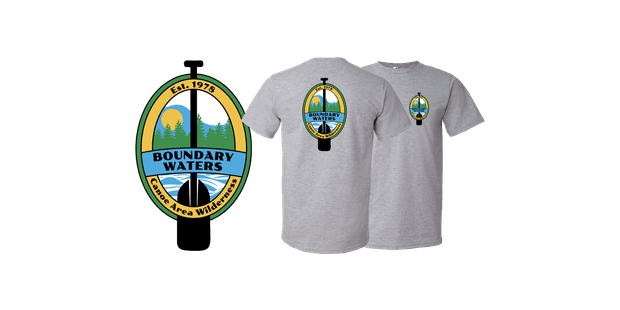Canoe Outfitting
Most people can ride a horse better if they have a saddle. Knee pads and/or foot braces are like "canoe saddles" -- they properly position you in the hull and keep you planted when your bronco leaps and turns in waves. High seated whitewater and wilderness tripping canoes are best outfitted with thick, closed-cell foam knee pads which are glued to the floor. You may also benefit by installing thigh straps and toe blocks. Low seated (the seats are too low for kneeling) fast touring canoes are better equipped with foot braces which lock your lower body into the canoe. Both systems work.

Some whitewater fittings can be awkward, or even dangerous, in a wilderness tripping canoe. For example, thigh straps--which are essential for playing in dicey rapids--hang up on boots, clutter standing space and flop around on portages. On shallow stretches, it's a game of musical in's and out's. Packs, camera bags, spare paddles, splash cover and the like create enough obstacles to crawl around. Better to eliminate thigh straps and concentrate instead on tuning your seats and knee pads.
TUNE YOUR SEATS
A dead level seat is best if you always sit in your canoe. Kneelers will want a seat whose leading edge is dropped down about three-quarters of an inch. The angled attitude prevents the edge of the seat from digging in to your buttocks when you kneel. I commonly alternate between sitting and kneeling so I prefer a less ambitious three-eighths inch drop. You'll have to experiment to learn what angle is best for you.
~Get the BWCAW Tee~
With over 1,090,000 acres of wilderness area, the BWCAW is a paddler's paradise.
KNEE PADS
Some paddlers prefer elasticized or strap-on pads. Others like removable "kneeling aprons" like those used by freestyle paddlers. But loose items that can get lost are unwelcome on any canoe trip. Better to glue knee pads into the canoe. Any type of waterproof foam, except Ensolite® -- which crushes badly and crumbles in the sun -- will work. My favorite foam is ethyl-vinyl-acetate (EVA). It's expensive, so most camping stores don't carry it.
You can buy pricey closed cell foam knee pads at canoe shops, or just cut a closed cell foam sleeping pad into knee pad size pieces and glue them into the canoe. Weldwood® waterproof contact cement is the best glue I've found for securing pads to slippery Royalex and polyethylene hulls. Once set, Weldwood® never lets go!
A properly "tuned" kneeling position has your duff planted solidly on the seat and your knees firmly embedded in the foam knee pads that are glued to the hull. If your seat is too high, you lose control; if it's too low, you risk foot entrapment. You can "comfort tune" your position with thicker or thinner knee pads. Bow pads should have a raised ridge on the inside (closest to the keel line); stern pads should have a raised ridge on both sides. The ridges prevent your knees from slipping sideways off the pads when the canoe rolls. If this sounds like "finicky fiddling", remember that some northern rivers have rapids that continue for miles. You are often on your knees for a long time.
FOOT BRACES
Foot braces, like stirrups, lock your feet solidly to your horse when you paddle from a sitting position. A foot brace need not be exotic. For the stern, a heavy pack placed strategically will work fine. A light day pack in the bow may be all you need. But a more permanent solution is a telescoping aluminum tube, crushed at the ends and bolted to a pair of aluminum shod wood rails that are glassed into the canoe. Don't pop-rivet aluminum rails to the canoe as is commonly done on flat-water racing canoes. You might shear off an exposed rivet in rapids or when the canoe smacks a boulder while lining.
SAFETY AND CONVENIENCE
Safety and convenience are the bottom line when outfitting a wilderness canoe. Anything that interferes with boarding or exiting the canoe, or gear placement, may have to go. For example, foot braces that can't be removed take up space and muck up the floor; thigh straps catch on feet and dangle out on portages. Sliding seats -- as useful as they are -- add weight, and they often can't be raised high enough for safe kneeling.
As you pile on those backwoods miles, you'll ultimately discover that a "simple saddle that fits you" -- tuned seat and knee pads with security ridges -- is the most practical arrangement for a tripping canoe that may be portaged, lined and dragged as much as it is paddled.
Cliff Jacobson is a professional canoe guide and outfitter for the Science Museum of Minnesota, a wilderness canoeing consultant, and the author of more than a dozen top-selling books on camping and canoeing. www.cliffcanoe.com
Related Articles
In this video, the team at Austin Kayak show you how to rebuild your keel if you have created a hole…
What is the main difference between a dry suit and a semi-dry suit? Why is there's such a big difference…
NFCT auction supports stewardship, programs for 740 miles of waterways This fall, paddlers and…
A red-tailed hawk was rescued by two kayak fishermen, Matt Wells and Dana Scroggins, after it was…




